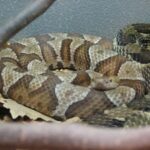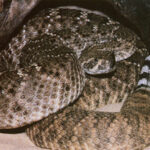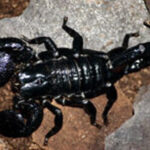A lot of people are intrigued and interested in the strange and unusual that lies beneath the ocean’s waters. Many people attempt to collect and sometimes breed some of the living things that make us go awe.
The Lionfish is one of those awe-inspiring things for me. I have been thinking about starting a fish tank, yeah I know it sounds crazy because I have three cats, but I wanted to try. Within my search of types of fish, I came across this wonderful and venomous fish.
The Lionfish is sometimes known as the Turkey Fish, Dragon Fish, and Scorpion Fish. The Lionfish is a voracious predator that has lightning quick reflexes that they use to swallow their prey whole. They are notable for their extremely long and separated spines, as well as having a generally striped appearance of red, brown, orange, yellow, black or white stripes. Nothing embodies both the beauty and danger of the oceans more than the Lionfish.
Some people like to capture their own Lionfish from the wild. If you want to do this, you’ll need to travel to the tropical Indo-Pacific region of the world, however various species can be found worldwide, such as in the Eastern Atlantic Ocean and Caribbean Sea.
I personally prefer to walk into a fish store and walk out with a fish instead…
So what do you look for when you are purchasing a tropical fish such as the Lionfish?
Know that there are different types of Lionfish: Antennata Lionfish, Blackfoot Lionfish, Fu Man Chu Lionfish, Fuzzy Dwarf Lionfish, Radiata Lionfish, Volitan Lionfish, Dwarf Lionfish, Japanese Lionfish, Devil Lionfish, Russell’s Lionfish, and Ambon Lionfish.
Each one of these types of Lionfish is unique in their own way.
If you get an Antennata Lionfish, your looking at it to grow up to eight inches with a carnivore diet, so make sure your planning on feeding him with live shrimp, live fish, and crustacean flesh. Your tank should have a lot of light and the minimum tank capacity would be about 30 gallons. You also want your tank conditions to be set between 72 and 78 degrees Fahrenheit with a pH level between 8.1 and 8.4. Remember these are tropical fish and they like many hiding places. The Antennata Lionfish can be also found under the name Ragged-finned Firefish and Spotfin Lionfish. This unique type of Lionfish has red, white, and black vertical stripes along its body.
If you are planning on giving this Lionfish tank mates, this species is normally indifferent towards them even if it’s of it’s own kind, unless they are small enough to swallow. This type of Lionfish is venomous, so be careful!
Blackfoot Lionfish, this is one of my favorites, it can grow up to 8 inches as well and normally has can be kept in a tank from 72- 82 degrees Fahrenheit, a little warmer than the Antennata Lionfish, and is also a carnivore that likes to diet on benthic invertebrate and small fish. The Blackfoot Lionfish can be smaller than the common lionfish and is unmistakable as it has a long thread like first ray of the tail fin and spends most of its daytime half submerged in the sand waiting to come out at night where at that time it normally is more active, and of course still venomous.
Volitan Lionfish, is the common lionfish that is out there. These fish are white in color with dark red stripes and markings throughout their body and fins. They can be kept with any fish of the same size or larger. Small fish will likely be eaten. These fish like to be provided ledges, caves, or crevices where they can hang out during the day. These fish prefer to be kept only one per tank. Volitans lionfish is considered the ultimate lionfish by most marine aquarists.
As adult fish they can grow up to 15 inches and must be kept in a 75 gallon or more tank. And of course these fish can be sociable and peaceful as long as their tank mates are not small enough to eat. Volitan Lionfish will also die in unexposed places during the day and come out at night. When feeding this carnivorous fish, it is suggested to feed it live fish in the beginning and gradually entice them to eat frozen foods such as silversides and lance fish. Normally these types of lionfish are encouraged to eat non-live marine foods as soon as possible.
Fu Manchu Lionfish on the other hand grow up to four inches and survive happily in a 30 gallon tank with the same water conditions as the Antennata Lionfish. The Fu Manchu Lionfish, also known as the Twinspot Lionfish, or Ocellated Lionfish, has red, white, and black vertical stripes along the body. It has large, fan-like pectoral fins, and tall, quill-like dorsal fins. It is unique from other Lionfish because of the two, feeler-like appendages on the chin. The Fu Manchu Lionfish diet consists of meaty foods such as live shrimp (including ornamental shrimp), live fish, and sometimes, crustacean flesh.
Radiata Lionfish are also a favorite of mine, also called the Radiated Lion or Clearfin Lion, they can grow up to about ten inches and require about a 65 gallon tank for comfort. These types of lionfish are considered rare in the wild and are not frequently seen in stores, if they are seen in stores, then they will be only purchased at a higher price. The Radiata’s markings consist of alternating wider vertical bands of dark red, browns, black- reds, red- greens, which are all separated by a sharp white stripe. The Radiata are difficult lionfish to keep because they are passive and do not compete well for food against tank mats. These lionfish seem to prefer to eat shrimp and crabs over fish. These fish prefer to be kept only one per tank. Tank conditions are still the same as the Antennata Lionfish.
Russell’s Lionfish on the other hand are hardy, pollution tolerant lionfish that are normally found in coastal waters near mud flats in South Africa. The Russell’s Lionfish is also known as the Red Volitans, Spotless, or Soldier Lionfish; Large tail or Military Turkey fish; and Plain tail Fire fish. It is tan with light brown vertical stripes. The spines on the dorsal, anal, and pectoral fins are fleshy, and not banded like those of other lionfish.
The Russell’s Lionfish requires a 50 gallon or larger aquarium with numerous hiding places. As said before, same tank conditions as the Antennata Lionfish. It is a very hardy fish and generally peaceful, except towards other lionfish. It may eat tank mates including ornamental shrimp and small fish. Feeding may be difficult until the fish is acclimated to the tank; feeding live shrimp or feeder fish may be helpful. Once acclimated, the Russell’s Lionfish will eat meaty foods including the flesh of fish and crustaceans.
The Devil Lionfish, also known as the Mombassa Lion or Deepwater Lionfish, is a little different, it only grows up to about 7 inches and need to be fed entirely on crabs. A 55 gallon tank is perfect for this unique lionfish. The Devil Lionfish have larger eyes than other lionfish, it sometimes looks as though the eyes are out of proportion with it’s head. The stripping patterns on the lionfish are red and almost look fuzzy. The cares of the Devil fish is similar to that of the Antennata Lionfish except that it is to be intolerant of harassment by any fish and are also intolerant of poor water quality.
All of the above types of Lionfish are gorgeous fish, but remember that they are dangerous. Lion-fish have venomous fin spines that can produce painful puncture wounds. Fatalities, however, are rare. The fish have elongated dorsal fin spines and enlarged pectoral fins, and each species has a particular pattern of zebra like stripes.
A person punctured by one of the sharp spines will immediately feel strong pain. Rapid swelling of the affected body area develops along with the possibility of making movement of limbs very difficult. Lion-fish stings can cause nausea, breathing difficulties, paralysis, convulsions and collapse. Even death may occur in exceptional circumstances. Most people survive in spite of the great pain. The venom in the spines remains active for days, so even discarded spines should be treated with caution. It may take several months for a full recovery and if the sting is left untreated, gangrene may develop.
If stung, at first immerse the affected area (most often a hand or foot) into hot water. This is thought to improve the blood flow and disperse the venom. Local anesthetic agents may provide deep relief in most cases and occasionally a nerve-block may be required. An X-ray of the wound should be performed to detect any presence of broken spines, so any possible infection can be prevented.
Always remember that with taking care of any tropical fish, they have been taken from their natural habitat and placed in a limited amount of space that is unknown to them. So make it as comfortable and as close to home for them as possible.






